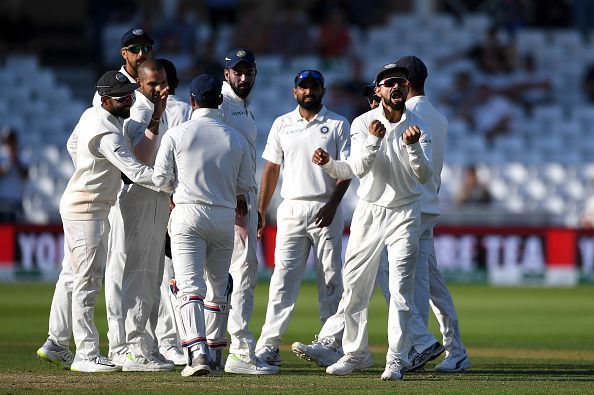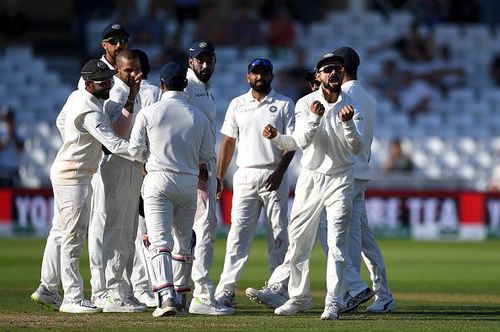
What lies on the other side of 2-1 for India?

A series that has enthralled its followers due to its competitiveness. Captain Virat Kohli leading from the front, receiving negligible support from his batting partners. Indian bowlers bowling out their opponents. At times, outperforming and outclassing their opposite numbers. Ajinkya Rahane coming into his own when his team needed the most. Chetheshwar Pujara’s struggle with running between the wickets. Hardik Pandya proving that he can be the bridge between bowling and batting. The home team leading the series 2–1 at the end of the first three matches.
The resemblance between India’s tour of South Africa and that of England (so far) have been striking. Let's unravel India's identical journey.
Batting failures put India on the backfoot
The first two Tests in both the series saw India’s batting unit barring Kohli, fail miserably, albeit facing extraordinary attacks on pitches that always had something for the bowlers. On both occasions when India was 2–0 down, Kohli didn’t mince words when he asked his teammates to be hard on themselves, to step up and find a way to tackle the difficult situations.
Coach Shastri, on the eve off Trent Bridge Test, asked his batsmen to be prepared to look ugly and show some grit in the middle and even backed Rahane to be the pillar he is for Indian Cricket. Never mind the fact that the same Rahane was dropped in South Africa only to play the dead rubber.
Kohli's men make a comeback
In both the series, India made a comeback to win their first match, after trailing by 2-0 against respective hosts. Pujara scored a resolute 179-ball 50, stealing his first run on the 54th ball, soaking in all the venom from the bouncy Wanderers pitch. At Trent Bridge too, he compiled 72 runs from 208 balls helping India set a huge 4th innings target of 521.
Another batsman who stood out in India’s victories was Rahane. At Johannesburg, he was the comeback man whose 48 in the 3rd innings proved to be vital in the context of the game. His 81 in the 1st innings of the Nottingham Test helped India to a total of 329. The common factor in all these partnerships was the skipper, Kohli, with scores of 54, 41, 97 and 103 in the chronological order.
Jasprit Bumrah’s fifer is one more feat that tipped the scales in India’s favour in its victories. Bumrah’s second 5-wicket haul has been more impressive than his first against South Africa, not only because he was making a comeback after a finger injury in the 1st T20I against Ireland that kept him out of the action but also as it involved more of top-order wickets.
His scalps in both these matches included opponent skippers Joe Root and Faf du Plessis and the best batsmen in the likes of AB de Villiers, Jos Buttler and Jonny Bairstow. The rapid rise of Bumrah in the longest form is quite evident as he tops the list of India’s pacers with most wickets — 20 after 4 Tests.
Hardik Pandya - The Emerging Star
It is not often that the limelight falls on an Indian cricketer for his heroics with both bat and ball. It’s even rarer if the bowling style of the particular player is pace and not spin. However, Hardik Pandya seems to have broken the shackles. He silenced his critics with a 5-wicket haul to bundle out England to a paltry total of 161 and backed it up with a run-a-ball 52.
Pandya’s ability to latch onto various nuances of the game in a such a short span and his resolve to contribute to the team has helped him in his course. In the Lord’s test, when the ball wasn't hopping around like it did for the English pacers, Pandya continued to pitch the ball on a good length consistently resulting in 3 wickets to his name.
At Trent Bridge, he pitched it up and allowed the ball to do its thing. Along with the out-swingers, he bowled those that just held the line and even used the width of the crease to his advantage. He reasoned out that it would’ve been easy for the batsmen if he lacked variety. His noticeable contribution in the South Africa series was the 93 runs in the 1st Test which provided a platform for India to contribute in the match.
With these comebacks, India have shown they have the ability to fight back, cause an upset. Maybe it is the hunger to win outside India or it is the immense belief the team has on its abilities or the never give up attitude of the captain that rubs on the other team members, India has proved it is not a force to reckon with.
Comebacks prove that India is a good team but does team India has what it takes to be a great team? The best thing about a 5-match series is that it provides ample opportunities. Here, team India has the opportunity to prove that these wins are not just aberrations, the opportunity to find new heroes, the opportunity to battle out a draw or maybe even come out on the top and achieve 3-2, a target that looks distant but not unreachable.
Can they pull up their socks and deliver? The answer awaits at Southampton.